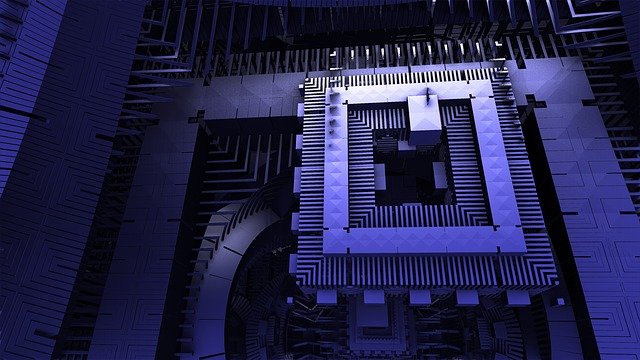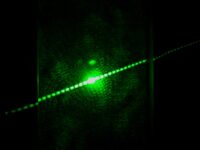The world has become increasingly reliant on the internet, whether it’s social media, classrooms with online assignments, or research, depending on virtual simulations. Technology is becoming increasingly powerful and with that follows more powerful hackers. While the appearance of hackers is inevitable, the United States and China are leading the race to develop a system to protect the internet using concepts of quantum computing technology to create an internet that is virtually unhackable.
While the appearance of hackers is inevitable, the United States and China are leading the race to develop a system to protect the internet using concepts of quantum computing technology to create an internet that is virtually unhackable.
Imagine a game of telephone, where one message is being relayed across a room through 10 people. Each person whispers the message they hear to the next, and as they whisper, people who are passing by might hear, or the person they intend to whisper it to can hear it wrong. By the time it gets to the last person, the message probably changed, and the people who were eavesdropping might have gotten parts of the message that weren’t intended for them to hear. That’s what our internet is now. Signals, or in this example, the message, degrade over long distances, and every time that message is relayed to the next “repeater,” it is vulnerable to eavesdropping.
Now imagine that game of telephone, but instead of passing a message by whispering, each one of those 10 people passes along a note. The note is easier to hide from people trying to eavesdrop, and the message can’t be misinterpreted or changed because it is written down on a piece of paper. This new system is very similar to a quantum computing system. Quantum computing systems use photons of light to send messages. This method allows the message to be sent more accurately and faster because of two major concepts: quantum entanglement and superposition.
Quantum entanglement is the phenomenon of the existence of two events that are coincident. If you open your sock drawer and you pull out a left sock, you know there’s a right sock in there to match it. In this scenario, the two events of finding each sock are entangled. This concept can translate into quantum mechanics: if one event happens somewhere in the world (e.g., a specific photon of light is emitted), the other event will instantaneously occur, no matter what the distance between them. As a result, messages can be delivered almost instantaneously with a variety of entangled particles.
Superposition, the concept that a particle can be in two states at once, furthers the security of data in quantum computing systems. Using this concept, a message can be conveyed in several quantum entangled particles that are each in a superposition of states. When representing information, the particles can be 0 and 1 in binary at the same time. Particles with superpositions are significantly harder to decipher because they don’t only mean one thing, and instead of sending the message signal to multiple repeaters like in a classical computing system, the message is encoded into entangled pairs of photons in a superposition of states. After the message is delivered, it is translated using a quantum decrypting system. Using this process, data can be sent in a more secure and efficient way.
Using this process, data can be sent in a more secure and efficient way.
This quantum computing system requires the ability to create and manipulate photons for every message that one wishes to send. After these photons are controlled, their properties of quantum entanglement and superposition can be used to more efficiently and securely transfer data and send messages over long distances. The first domains that this system will be used with are most likely the financial and healthcare sectors. But just like the transition to a fiber-optic network, the transition to a quantum computing network is going to take time; however, after working on a quantum computing network for decades, this new network is closer than we think.
Journal of Electronic Science and Technology (2019). DOI: 0.11989/JEST.1674-862X.90523016


